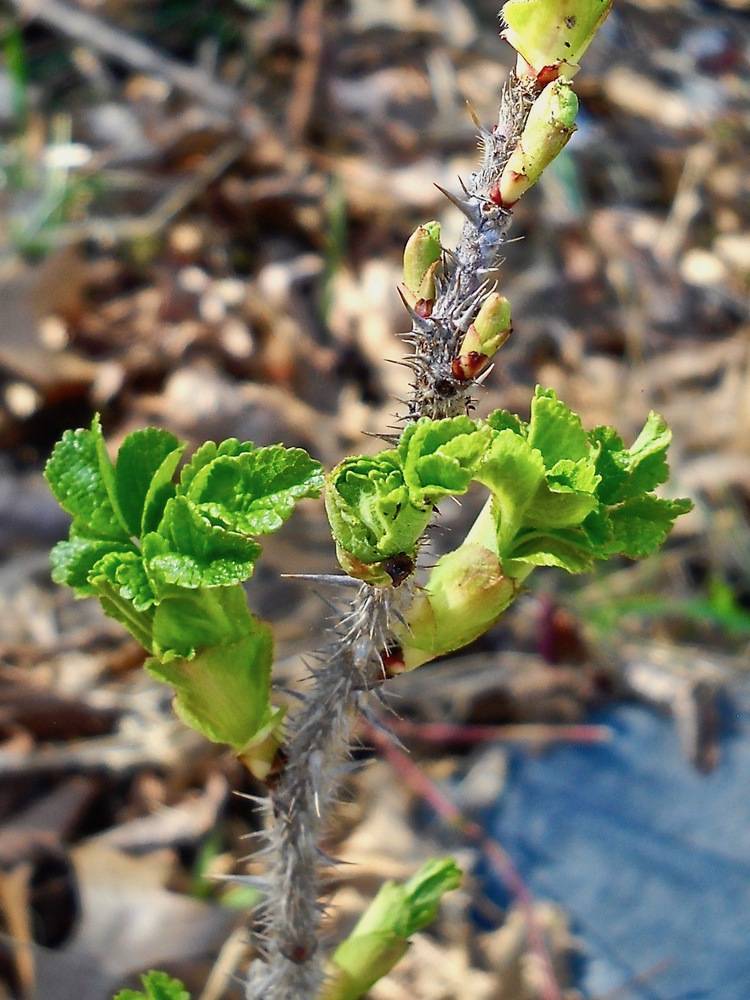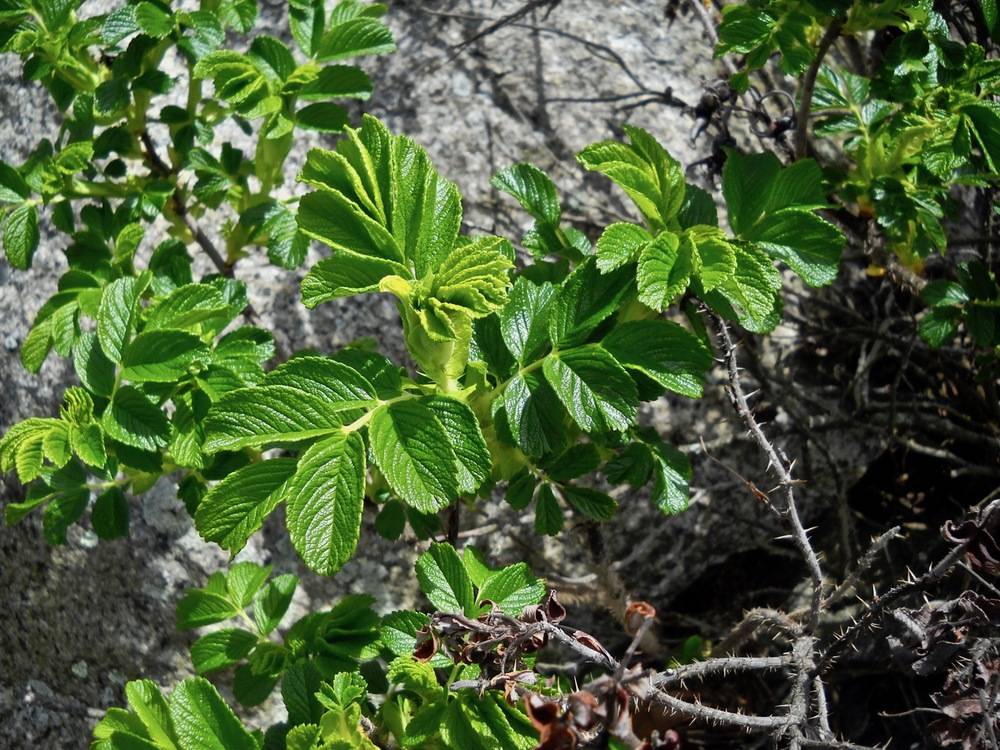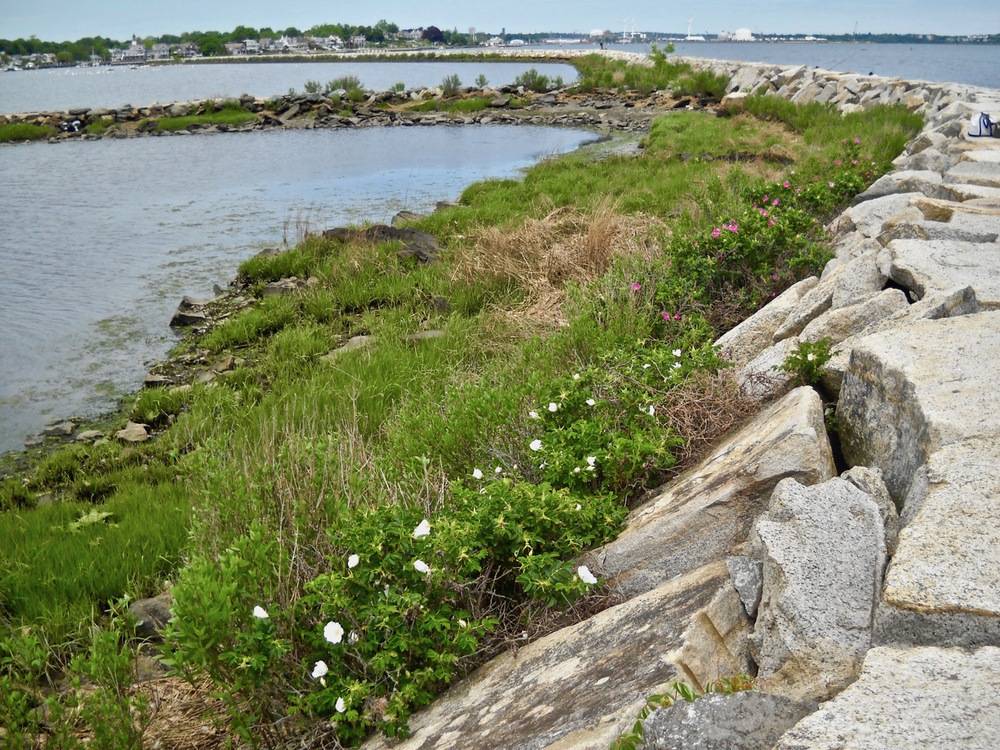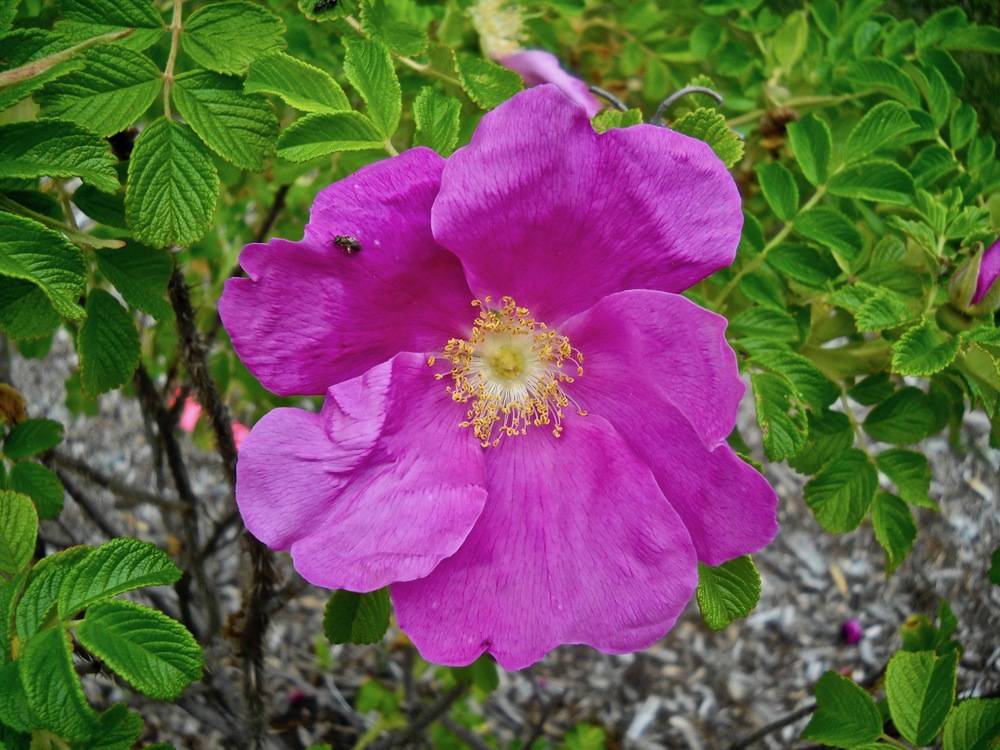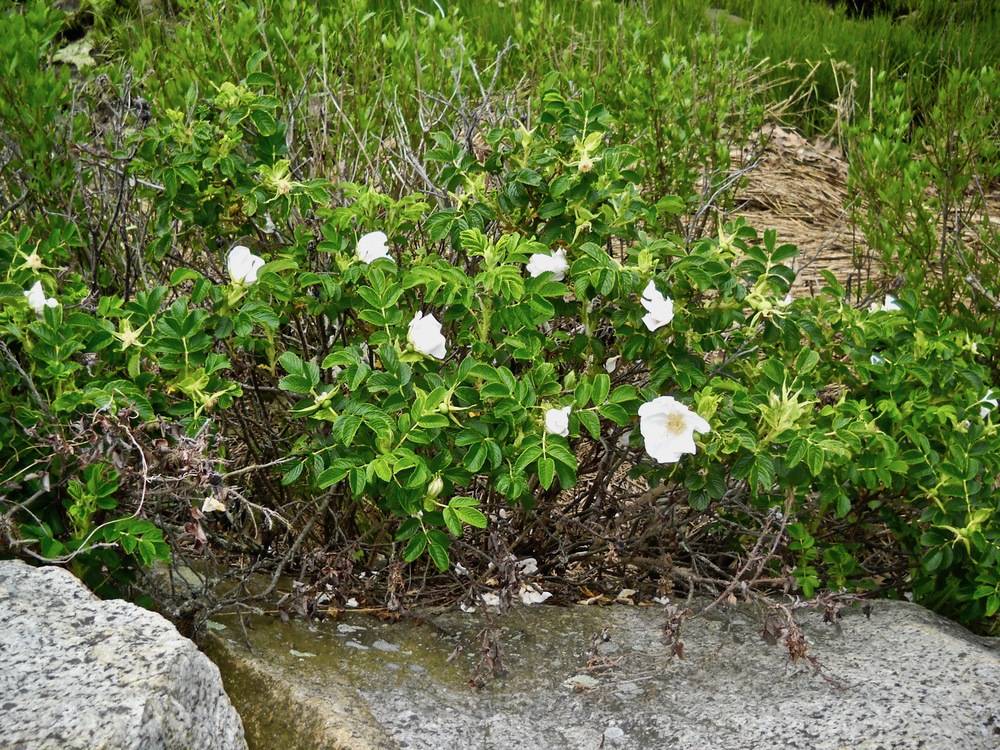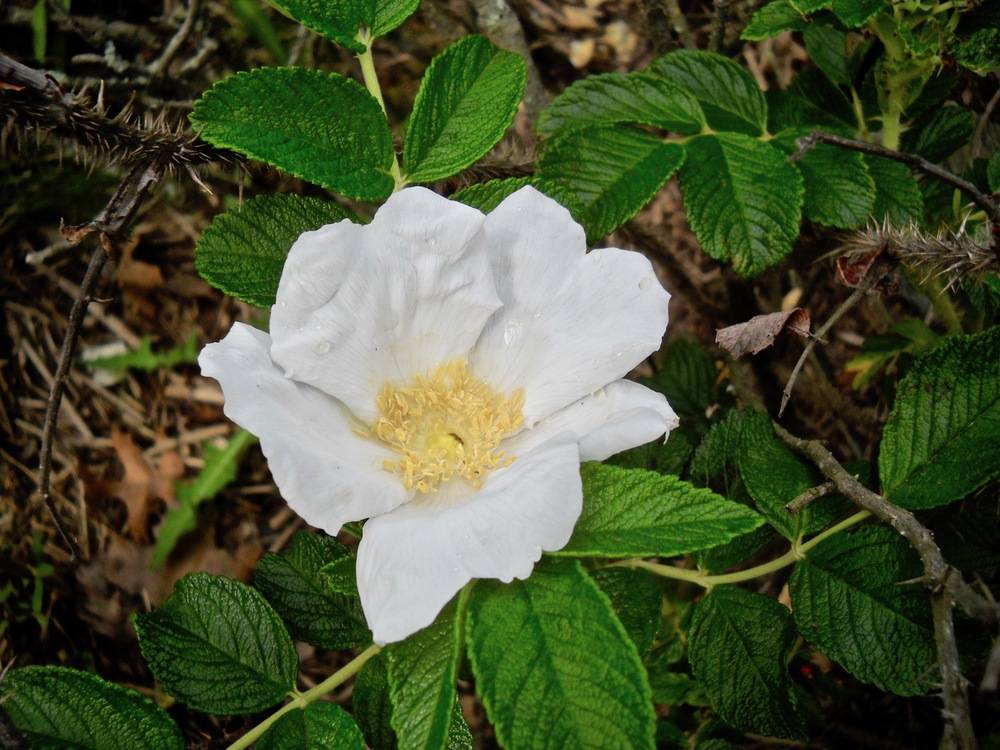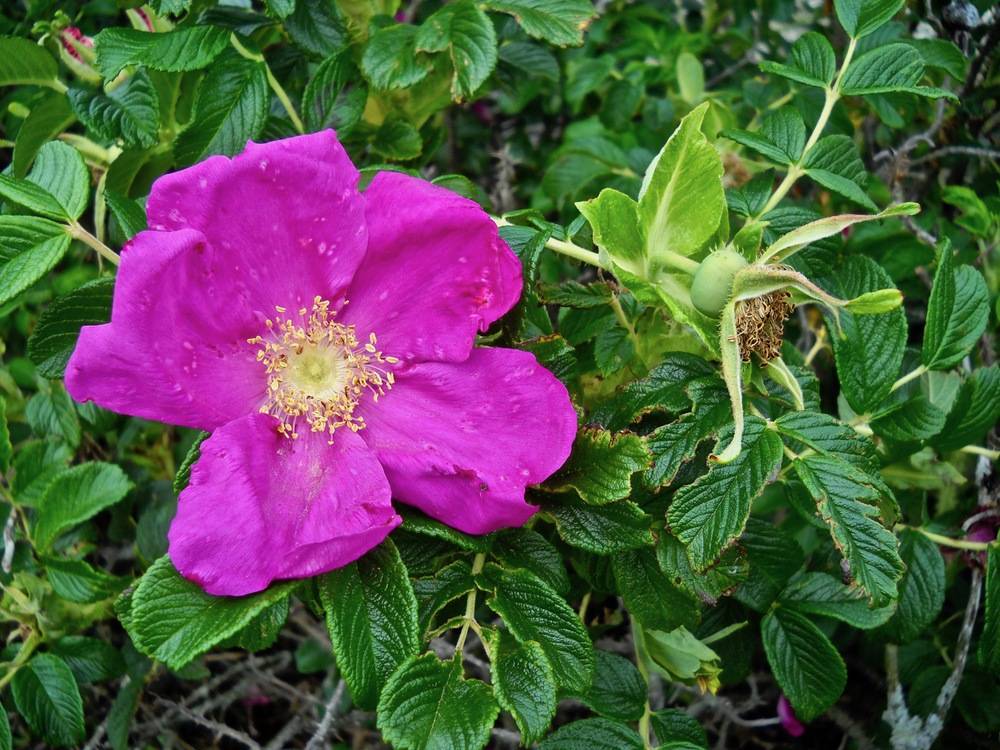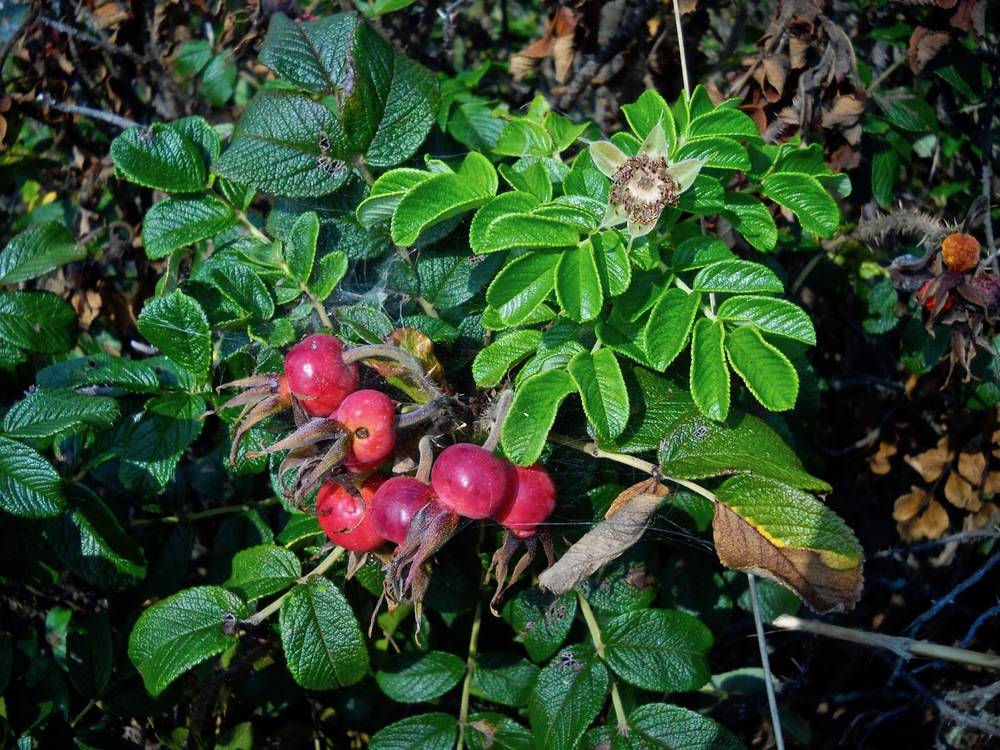beach rose
The beach rose is a thorny shrub native to the sandy coasts of eastern Asia, northeastern China, Japan, Korea, and southeastern Siberia. It was introduced to North America in 1845 as an ornamental. A wild plant was first reported on Nantucket in 1899. By 1920, the rose was reported to be well established all over Nantucket and Connecticut. Its salt tolerance and the ability of its root system to control soil erosion led to intentional plantings along seashores and roadways. It has become such an integral part of beach vegetation along the entire New England coast that most people are surprised that it is not native to New England.
At Salter Grove, several plants are in the playground ornamental beds but there is only one naturally occurring plant on the mainland along Marsh Trail near trail marker M1. However, directly eastward across South Cove, there is a 30-foot hedgerow of beach rose growing along the base of the breakwater. Interestingly, the northern two-thirds of the shrubbery produce deep pink roses whereas the more southerly bushes all produce white roses.
Beach rose has a suckering habit where thorny side branches grow from the base of an established stem, or from roots some distance away, to result in the formation of dense impenetrable thickets. It has become an invasive species in many European countries where its growth has not been regularly managed after introduction. Ironically, it has been listed as an endangered species in its native China where natural populations have declined.
In China, the fragrant petals are used to make potpourri, or jams and other sweets, as well as to prepare traditional remedies for irregular menstruation and gastritis. Jams and jellies are made from the fleshy rose hips which look like cherry tomatoes and are richer in vitamin C than citrus fruits. Because of the absence of citrus fruits during World War II the English and Scandinavians depended on rose-hips as an important source of vitamin C.
Birds and rodents readily feed on the fleshy fruits and disperse the seeds far from the parent plants.
For more information:
https://gobotany.nativeplanttrust.org/species/rosa/rugosa/
https://en.wikipedia.org/wiki/Rosa_rugosa
https://www.missouribotanicalgarden.org/PlantFinder/PlantFinderDetails.aspx?taxonid=286364
https://www.gardenista.com/posts/rosa-rugosa-roses-perennials-flowering-shrubs-growing-care-tips/
Coon, N. (1979). Using Plants for Healing. Rodale Press. p. 174.
Richardson, J. (1981). Wild edible plants of New England: A Field Guide: Including Poisonous Plants Often Encountered. DeLorme Pub. Co. pp. 164-165.
Seymour, T. (2020). Foraging New England: Edible Wild Food and Medicinal Plants from Maine to the Adirondacks to Long Island Sound. Falcon Guides. pp. 22-24.

